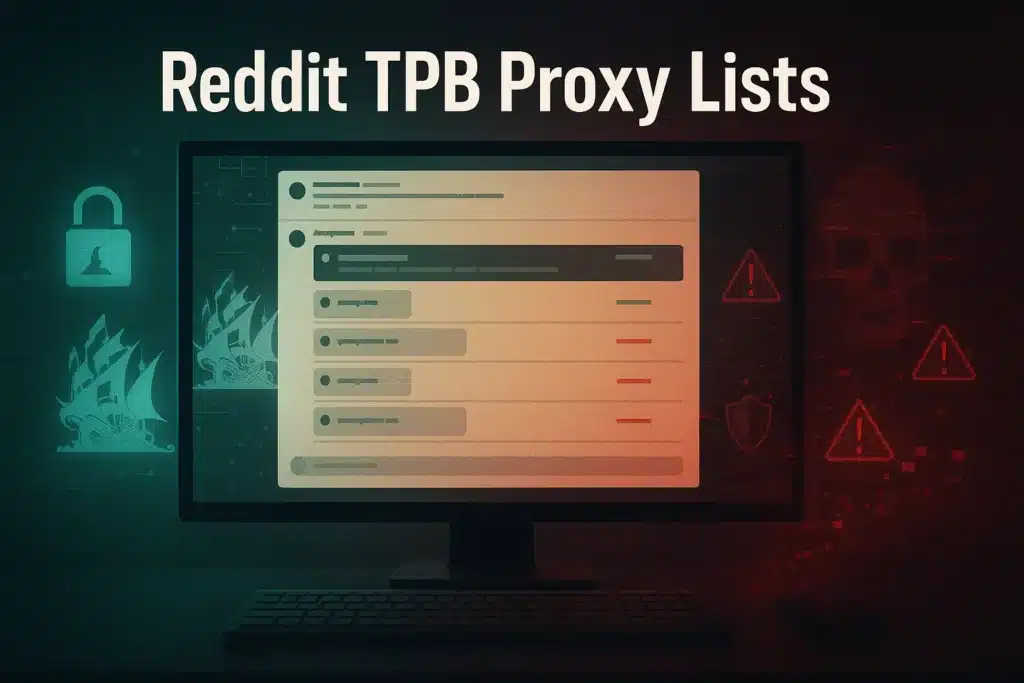If you found this article, it most likely means you’re looking for information about proxies. You may have questions like, what are the differences between rotating, sticky sessions, and static proxies? Which should I use? Where can I buy them?
This and more are what we will cover in the rest of this guide. We’ve gathered the answers to these questions and explained everything you need to know. Yes, both the good and the bad sides.
Knowing the difference between these types of proxies is crucial. If you don’t know how they work, you won’t know which to pick.
Alright, then, shall we begin?
| Interested in buying rotating proxies? |
| Check out our rotating proxies! |
General Proxy Info
Table of Contents
ToggleWith a proxy, your requests are not sent to the destination directly. Instead, the proxy serves as a front. The proxy network decides which IP within its pool to use and routes your data through it. This makes it look like the source is at your normal IP address.
Proxy servers are helpful because they enable users to hide their IP address and access restricted content without being detected. Additionally, as long as they have a residential IP address, they are capable of accessing geolocation-specific services.
Also read: Why Do You Need a Residential IP Address?
Rotating Proxies
A rotating proxy server automatically changes IP addresses as required. The host server will consider each user’s access as a unique visitor upon each IP address change. Having the provider rotate IP addresses through their IP pool for you is much simpler than changing them manually yourself.
The pattern of IP rotation varies. The two main styles are: rotating with each new request or rotating after a certain amount of time, known as a sticky session.
Also read: Top 5 Best Rotating Residential Proxies
How Do Rotating Proxies Function, and When Should I Use Them?
Let’s focus on rotating per-request proxies for a moment. If you immediately follow up on a request with another one, the central proxy server won’t utilize the existing request’s exit node. Instead, the main proxy server will randomly choose a new IP address from the pool and reset the connection each time.
If you have a limited proxy pool, rotating proxies won’t do you as much good. Instead, you’ll repeatedly end up with the same IP addresses.
Rotating proxies are ideal for most web scraping data collection. Cycling IPs regularly will convince the target site that all of your requests are from different sources. Instead of, you know, noticing that it’s a bot.
Also read: Geo-targeted Residential Proxy
Sticky Session Proxies
Simply put, sticky sessions and static proxies allow users to maintain a constant IP address for as long as they require. Without the need for end-user devices, data centers or ISPs allocate sticky session proxy servers directly. This ensures reliable connections at high speeds with around-the-clock accessibility.
Also read: When to Use Sticky Rotating Sessions
How Do Sticky Session Proxies Function, and When Should I Use Them?
A sticky session proxy and its operation are very similar to those of a rotating one.
Sticky session proxies keep the same session open for a longer period than rotating sessions, which start a new connection for each demand. Instead, it will hold each IP address for a predetermined length of time before rotating to the next one. For example, the session duration could be ten or fifteen minutes long, depending on the provider.
Additionally, if the exit node your request is routed through goes down, the system will choose a new device and IP address for the session, thereby ending it prematurely.
Sticky session proxies are particularly useful for people who use many social media accounts. They allow users to perform online activities requiring a persistent login in rapid succession, such as online shopping or posting continuously on classified sites, while still wanting to conceal their identity.
Also read: Why Social Media Is Important for Businesses?
Static Proxies
A point of confusion regarding static proxies is the fact that the name is used interchangeably for two different types of proxies. Sometimes, sticky session proxies are referred to as static. For the sake of this article, though, we will focus on the second type: proxies with a single persistent static IP address.
A persistent static proxy is simply one that never changes. When you give a static IP address to a device, that number remains until the device is removed or your core network changes.
Also read: Rotating or Static Proxies for Twitter
How Do Static Proxies Function, and When Should I Use Them?
Persistent static proxies still reroute your requests to mask your identity, just like other proxies. However, a key difference is that they will keep that one IP as long as your contract lasts, even when you change devices.
Static IP addresses have two notable advantages. One, they are very stable. Because they don’t change IPs, they avoid the constant interruptions to the user’s connection that rotating proxies can create. Two, they’re very simple to use. You only have to configure them once, and then you’re all set.
These persistent IPs are good for things like filling out forms or making online transactions in instances where a rotating IP address might elicit a ban. Also, closed-network servers and other critical equipment often use static IP addresses. They greatly ease communications and operations in closed networks.
Also read: SOCKS5 Rotating or Static Proxies
Static Proxies vs. Sticky Session Proxies vs. Rotating Proxies: A Comparison
| Rotating Proxies | Sticky Sessions | Static Proxies | |
| Efficiency | Rotating proxies let you send lots of back-to-back requests to a website without realizing they’re all from one person. But, if it bounces IPs at an improper moment for something that requires a persistent login, the website will detect it as bot activity. Some strict platforms, like Instagram, may ban the entire account. | Sticky session proxies let you maintain a login session while still giving some of the flexibility of per-request proxies. | Static IP proxies provide increased stability, but they concentrate all your efforts in one area. If a website decides the IP address is suspect, it may block it. |
| Extensibility | The proxy’s rotation schedule and IP pool size depend on the proxy service provider. Users will often be given some choices, but the provider’s configurations limit them. | Sticky session proxies have similar options as rotating proxy servers. Two things to note: a smaller IP pool size is less of a problem, and you need to configure the duration for each session in advance. | Restricted. Once some factors, like location, have been decided upon, they can’t be modified. |
| Privacy | The user’s IP addresses are constantly shifting, making it harder to track their online activities. | Sticky IPs are a sort of compromise between rotating and persistent ones. When the session ends, they have the same effectiveness as a rotating proxy. | Even from completely different devices, users always have that one replacement IP address, which securely conceals their original IP address the entire time. |
Also read: Should I Use Rotating or Static Proxies for Instagram?
Frequently Asked Questions
Q1. What is a static ISP proxy?
A static ISP proxy is a type of proxy that uses an IP address provided by an Internet Service Provider (ISP), but the key is that this IP address doesn’t change—it stays the same every time you use it. These proxies take the best features of standard ISP proxies and add the reliability of a fixed IP address, making them ideal for situations where you need absolute reliability, such as when managing accounts or evading website suspicion.
Unlike rotating proxies, which switch IP addresses with each request or session, a static ISP proxy gives you a fixed IP that looks like it’s coming from a residential user, making it less likely to be flagged or blocked by websites.
They’re also great for tasks that need a steady connection without interruptions, such as using load balancers in a network to distribute traffic evenly while maintaining the same IP for each connection.
Q2. What is the difference between static and sticky proxies?
The difference between static and sticky proxies comes down to how they handle IP addresses and connections.
- Static proxies give you a fixed IP address that doesn’t change, no matter how many requests you make. This is useful when you need a consistent IP for tasks like managing accounts or accessing region-locked content. These proxies are often associated with mobile proxies or residential IPs that remain constant, making them less likely to get flagged by websites.
- Sticky proxies, on the other hand, allow you to keep the same IP address for a set period or session, but the IP can change after that session ends. It’s like having a temporary static IP that resets after a while. Sticky proxies are great when you need to mimic a single user for multiple requests over a short duration, like when you want to avoid being flagged while web scraping.
Both types of proxies work through multiple servers to route requests from your device, but static proxies provide a permanent IP, while sticky proxies offer a session-based consistency.
Q3. What is the difference between sticky IP and rotation IP?
The difference between a sticky IP and a rotating IP lies in how they handle connections and IP address changes during your online activity.
- A sticky IP maintains the same IP address for a set duration or session. When you connect to a specific server through a static residential IP proxy, your subsequent requests will continue to use that same IP, providing stable connections. This is useful for tasks like logging into a web application where the server expects to see a consistent IP address for the session.
- A rotating IP changes the IP address with each request or at regular intervals. Each time you connect to a web server, the proxy service assigns a new IP, which is useful for web scraping or automated tasks where you want to avoid being flagged for sending too many requests from a single IP.
In summary, sticky IPs are great for maintaining session consistency, while rotating IPs help in avoiding detection by changing the IP frequently.
Also read: Rotating or Static Proxies for Shopify
Finishing Touches
In conclusion, both static and rotating proxies have their benefits and drawbacks. When you understand the differences between rotating, sticky sessions, and static proxies, you can better decide which is best for you.
Rotating proxies are excellent for people who want to frequently change their IP address so they can hide their identity online or prevent websites from tracking them.
When IP rotation is not a practical solution, static proxies can be the answer. You should use a static IP service when changing addresses can result in blocks or bans.
Lastly, a sticky session proxy is the answer when you need a balance between the two.
And that’s it! We hope you’ve enjoyed this blog post on the differences between static and rotating proxies and we hope you’ve learned something new.
KocerRoxy is an excellent provider option for rotating, sticky sessions, and static proxies. Their easy-to-use dashboard and affordable pricing make them an obvious choice for anyone looking to get started.
How useful was this post?
Click on a star to rate it!
Average rating 0 / 5. Vote count: 0
No votes so far! Be the first to rate this post.
Tell Us More!
Let us improve this post!
Tell us how we can improve this post?


